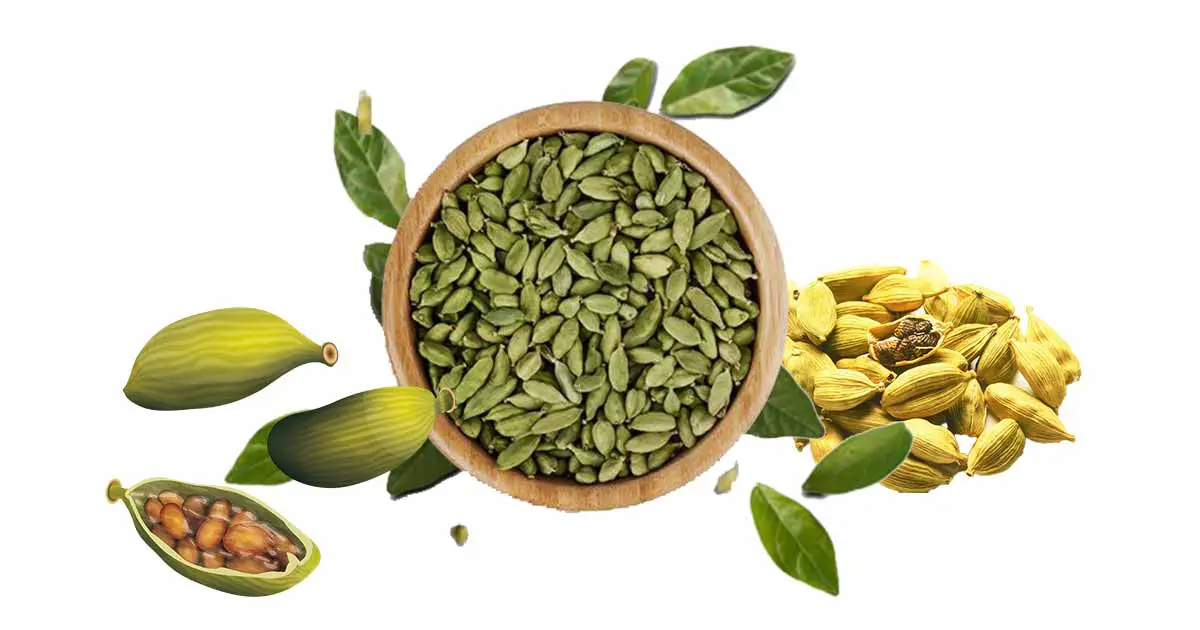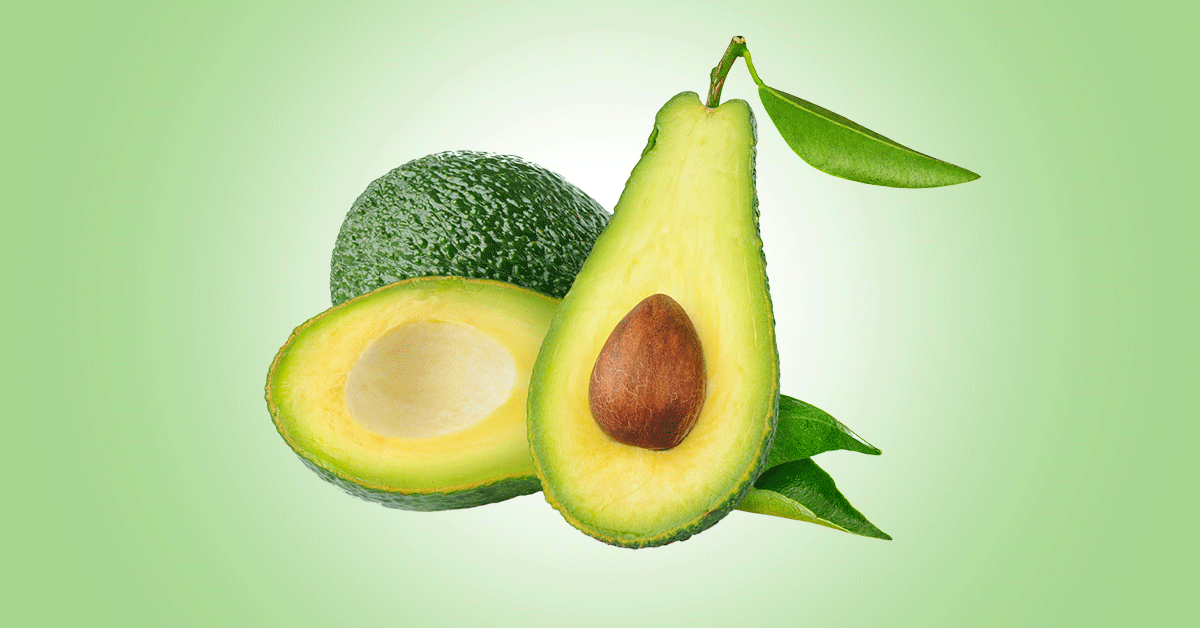Cardamom, also cardamon, or cardamum, is a plant belonging to the Zingiberaceae family just as Curcuma longa. It is widely called the “queen of spices” or “grains of paradise” because of the sweet, spicy taste and pleasant aroma. It is an exotic and expensive spice, with saffron and vanilla, the other two more expensive spices. Elettaria cardamomum is both a spice and an aromatic herb.
Other names of cardamom are small cardamom, green cardamom, or true cardamon.
The perennial plant can grow up to 2–5 m, and possesses underground rhizomes. Aerial psuedostems have leaf sheaths. The leaves are lanceolate, with acuminate tip, dark green, soft, glamorous or pubescent, velvety on the undersurface.
The flowers are small, pale white, short, stalked, fragrant while the fruits are tricolor capsules. The fruits are ovoid, triangular, and turns to brown or pink when ripe. It houses 15 to 20 seeds. The seeds are black when fully ripe in the capsule and have a white mucilaginous coat. They also have hard seed coat.
The ripe capsules are harvested to get maximum green color when curing. The capsule are dried in the sun, electrical dryer or fuel kiln.
It is native to the evergreen rainy forests of Western Ghats in South India but is nw grown in Guatemala, Sri Lanka, Nepal, Indonesia, Costa Rica, Mexico, and Tanzania.
Types of Cardamon
There are many types of cardamon, such as the:
- Green cardamom or Malabar cardamon (Elettaria cardamomum minuscula O minor): has small, bright green berries with intense aroma.
- Brown cardamom or Ceylon cardamom (Elettaria cardamomum major): large berries with intense flavor due to camphor content. Widely distributed in Sri Lanka.
- White cardamon: Any cardamon species that have undergone bleaching, reducing the organoleptic properties.
The capsule (fruit) of cardamon has been used to manage nausea, vomiting, diarrhea, asthma, teeth and gum infections, digestive disorders, irritation of the eyelids, pulmonary tuberculosis kidney problems, and cataract.
Elettaria cardamomum extract and essential oils have antioxidant, anticancer, antibacterial, antiviral, antifungal, antiseptic, antidiabetic, anti-inflammatory, carminative, stomachic, expectorant, gastroprotective properties.
The seeds from the capsule are also used for cooking and in flavoring food, confectionary, beverages and liquors. The seeds are ground into powder, and used as spices.
It is also used for making tea, cookies, donuts, salads, chocolates, pastries, ice-cream, gingerbread. Cardamom can be combined with other herbs like anise, coriander, cumin, clove, vanilla, nutmeg, and pepper. It is a natural preservative for meat.
Cardamom coffee, is called “gawah” in Arab culture, and is believed to have less caffeine. In India, cardamon is used for recipes like curry and masala chai.
In the food industry, the essential oils are used to produce alcoholic, non-alcoholic beverages, frozen desserts, sauces, baked products, puddings. Since it has antiseptic property, it is also used to produce perfumes, lotions, soaps, and detergents.
Constituents
Cardamom contains compounds of classes such as carbohydrates, proteins, minerals, lipids, essential oils, flavonoids, anthocyanins, alkaloids, terpenoids, and carotenoids. The essential oils and extract are used as functional food, and in nutraceutical and pharmaceutical companies.
The flavonoids include (catechin, myricetin, rutin, quercetin and kaempferol) and carotenoids (lutein and β-carotene)
The essential oils are mainly monoterpenes. They include 1,8-cineole, nerol, α-terpinyl acetate, α-terpineol, linalool, limonene, sabinene, myrcene, p-cymene, γ-cadinene, β-selinene, β-caryophyllene, octanal, and α-pinene.
The aroma of the capsule and seed is due to 1, 8- cineole and α-terpinyl acetate.
The seed oil from cardamom contains mainly fatty acids such as oleic acid, palmitic acid, linoleic acid. There are minor quantities of myristic acid, palmitoleic acid, stearic acid, arachidic acid, eicosenoic acid, and α-Linolenic acid.
There are tocopherol in the oil, such as α-tocopherol, γ-tocopherol and δ-tocopherol. Tocopherol has vitamin E activity. It is a powerful antioxidant and prevent diseases such as cancer (kidney, lung, and bladder)
Nutritional composition
According to the USDA, a 100g of cardamom spices contains 8.28 g of water, 10.8 g of proteins, 28 g of dietary fiber, 6.7 g of fats, 5.78 g of ash, 68.5 g of carbohydrates, and 311 kcal of energy.
The minerals include high quantity of calcium (383 mg), potassium (1120 mg), magnesium (229 mg), phosphorus (178 mg) and small quantities of sodium, iron, zinc, copper, manganese.
Vitamin content includes vitamin C, thiamine, riboflavin, niacin, and Vitamin B-6.
Cardamom Tea
This is a tea made from the infusion of cardamon seed powder, or crushed cardamon pods. This tea is very common in the Arab world. It is also mixed with coffee, milk, lemon slices, black tea, green tea, or other herbs such as ginger roots, cloves, black peppercorn, or cinnamon sticks.
The tea is aromatic, spicy, sweet, refreshing, and soothing. The green or true cardamon is used for making the tea, but the black cardamon can still be used, though they are less suitable for chai tea and desserts, as it has smokier scent and flavor.
The tea prevents obesity, improves glucose intolerance, inflammation, bacterial infection, and oxidative stress due to antioxidants present. It also relieves sore throat, anxiety, stress.
How to make Cardamom Tea
- Add cloves, cardamon, and ginger to a pot with water.
- Boil it and reduce the heat. Simmer it for 5 minutes
- Add the tea bag, turn off the heat and stir.
- Steep it
- Add sugar or honey for taste.
Home Remedies with Cardamom
- Cardamon when combined with ginger, lemon, and lavender helps to relieve nausea and promote relaxation
- In stomach ache, it is mixed with honey.
- An infusion of mint leaves and cardamom is used to treat hiccups
- A pinch of cardamon seed and glass of milk is believed to be an aphrodisiac.
- Powdered cardamom seeds with 1 tsp banana leaf powder and 1 tsp amla taken three times daily is believed to manage conditions like gonorrhea, cystitis, nephritis.
- Drink made from the powder is used as antidote for snake and scorpion venom.
- Powdered cardamon capsules with pulverized cloves, ginger and caraway is used in digestive issues
Major Health Benefits of Cardamom
Anti-diabetic effect: Cardamon improved glucose tolerance. Ahmed et al. reported that cardamom supplementation possess anti-diabetic effect by supression of α-amylase and α-glucosidase. It may regulate glucose metabolism.
Blood pressure lowering: Cardamon contains a high quantity of potassium. This mineral helps to lower blood pressure and heart rate by increasing the excretion of sodium.
Antimicrobial activity: the essential oils of cardamon inhibits Escherichia coli, Staphylococcus aureus, Bacillus cereus.
The both fruit and seed extracts inhibited the growth of Aggregatibacter actinomycetemcomitans, Fusobacterium nucleatum, Porphyromonas gingivalis, and Prevotella intermedia microorganisms (Souissi et al., 2020).
The seed extract also inhibited foodborne pathogens such as Mycobacterium smegmatis, Klebsiella pneumoniae, S. aureus, E. coli, Enterococcus faecalis, Micrococcus luteus and Candida albicans, but no activity against Pseudomonas aeruginosa.
Antifungal activity was observed against Aspergillus terreus, Fusarium graminearum, Penicillium purpurogenum, and Penicillium madriti.
Elettaria cardamomum has broad-spectrum antibacterial and antifungal activities.
Dental health: the extract also inhibits microorganisms, such as Porphyromonas gingivalis that cause dental caries, or periodontal diseases. It is also used to prevent bad breath.
Antioxidant effect: oxidative stress can cause diseases such as diabetes, cancer, immune dysfunction and Parkinson’s. Antioxidants, which may be natural or synthetic compounds, prevent the formation of free radicals that cause oxidative damage and stress and diseases.
Cardamon seeds and capsules are an abundant source of antioxidant compounds such as quercetin, kaempferol, pelargonidin, and luteolins.
Cardiovascular effect: it lowers serum triglycerides concentrations in subjects with prediabetes, type 2 diabetes, nonalcoholic fatty liver disease (NAFLD) and ischemic heart disease (Shekarchizadeh-Esfahani et al., 2020)
Antiobesity effect: Elettaria cardamomum decrease lipid peroxidation and increase levels of antioxidants. It also reduced the levels of circulating MDA, and CRP concentrations, in obese and pre-diabetic individuals.
Respiratory conditions: Elettaria cardamomum can promote the clearing of the nasal passage and the chest of phlegm. This is beneficial in conditions like wheezing, asthma, and chronic obstructive pulmonary disease. The essential oil, 1,8-cineole, is an effective anti-inflammatory compound.
Aromatherapy: The essential oils are used to relieve nausea, digestive issues, sore throat, spasm, and as massage oil to relieve stress, anxiety, tension, and insomnia.
Insecticidal activity: the essential oils of Elettaria cardamomum has anti-insecticidal activities against Sitophilus zeamais and Trilobium castaneum. It is also insecticidal, agianst the larval instar and adults of tomato leaf minor (Tuta absoluta).
Anticancer effect: the essential oils of Elettaria cardamomum such as 1, 8-cineole and limonene exhibit anticancer activity. Also, the antioxidants in cardamom prevent oxidative damage, inflammation, and diseases such as cancer.
Anti-inflammatory activity: Cardamom essential oils 1, 8-cineole, linalool, 9-hexacosene, geraniol decreased the level of IL-1, IL-6, and TNF-α in carrageenan-induced rat paw edema model (Nithya, 2018)
The aqueous extracts of cardamom and turmeric increased the expression of interleukins, which may suggest possible anti-inflammatory or immunomodulatory action.
Also, the essential oils, α- pinene, β- pinene and α- terpineol had synergistic effects with 1, 8-cineole and enhanced the penetration of indomethacin in in vivo and in vitro studies.
Hepatoprotective effect: Cardamon exhibit hepatoprotective activity against carbon-tetrachloride-induced liver damage. This may be due to the antioxidant effect. It increases glutathione levels, helping hepatic detoxification of mutagens and carcinogens and inhibiting the formation of nitrosamines.
Treat digestive problems: Cardamon is used to treat stomach and intestinal spasms and gas, and also to increase bowel movement. The seeds have carminative, stomachic, and desiccant activity.
Precaution
Those with gallstones should take moderate quantity as it may trigger gallstone colic (spasmodic pain).
Side Effects
Cardamom is considered safe when used as a spice or as a herb. However, the aromatic terpenes in it can cause sensitivity in some individuals. It can cause contact dermatitis.
Hematuria has been reported. Cardamom may also inhibit platelet aggregation by blocking calcium transport and competing with agonists of glycoprotein IIb/IIIa.
References
- https://www.sciencedirect.com/science/article/abs/pii/S0378874119308918#:~:text=The%20botanical%20name%20of%20cardamom,primarily%20Elettaria%2C%20Amomum%20and%20Aframomum
- https://indiaagronet.com/horticulture/CONTENTS/cardamom.html
- http://dhcrop.bsmrau.net/cardamon/?doing_wp_cron=1687035223.5819330215454101562500
- https://www.researchgate.net/publication/349426875_CARDAMOM
- https://www.researchgate.net/publication/355171682_BIOACTIVE_COMPONENTS_AND_BIOLOGICAL_ACTIVITIES_OF_THE_CARDAMOM_Elettaria_cardamomum_L_PLANT
- https://pdfs.semanticscholar.org/ffd3/d31de716f9b965fc5b35c4db7477d1f1bccd.pdf
- https://pubmed.ncbi.nlm.nih.gov/27433883/
- https://www.sciencedirect.com/topics/agricultural-and-biological-sciences/elettaria-cardamomum
- https://www.ncbi.nlm.nih.gov/pmc/articles/PMC5772716/
- https://amiraspantry.com/cardamom-tea/












